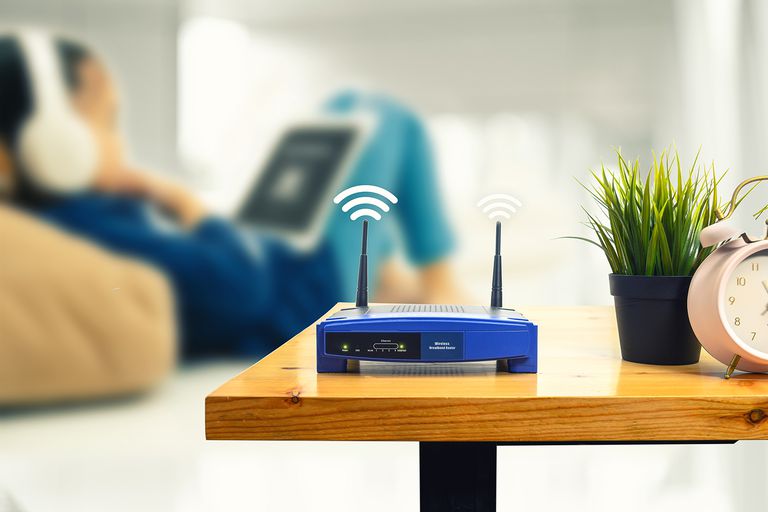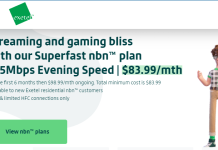It’s a complaint we hear far too often – not getting the speeds we expect from NBN plans. Unlike previous generation technology – where speeds were often fairly constant – there’s a lot of reasons why your NBN connection might not be performing the way you expect.
Unlike the previous cable or ADSL connections, your NBN connection can come by any number of channels to your house – you might be on FTTN (fibre to a node somewhere in your neighbourhood), FTTB (fibre to the basement for unit complexes), FTTC (fibre to the curb, usually out the front of your house), HFC (via the old cable broadband networks), FTTP (fibre direct to your house), Fixed Wireless (delivered wirelessly) or even satellite.
Each of these connection channels has its own challenges:
- All connections can drop in the event of a power outage in your neighbourhood, though FTTP and FTTC may work on a generator or UPS. Others are dependent on equipment elsewhere which may also be knocked offline.
- FTTC can be impacted by poor cabling between your house and the street pit. FTTB can be the same if the in-building wiring is poor.
- FTTN can be impacted by poor cabling between your house and the node, which could be several hundred metres away.
- HFC can suffer because of over subscription, or too many users online at the same time.
- Poor weather can knock out almost all connections, though FTTP is a bit more resilient. Satellite and Wireless are especially susceptible to rain interference.
It’s also worth remembering that your NBN plan will almost never deliver the maximum plan speed due to a range of factors. Generally speaking, you can expect the following speeds from your NBN plan:
- NBN Basic (12Mbps plan) – up to 10Mbps
- NBN Standard (25Mbps plan) – up to 19-21Mbps
- NBN Standard Plus (50Mbps plan) – up to 41-44Mbps
- NBN Premium (100Mbps plans) – up to 91-93Mbps
Do note, though, that these are averages. Your plan speed may burst higher, and under sustained use it may drop a bit lower. In our place, for example, some downloads will reach the full 100Mbps (or even exceed it for a brief while), but on average, peak speeds are around 92Mbps. Your mileage – and NBN speed – will of course vary!
However, if the power’s on and the weather isn’t wild, your NBN connection should be pretty good, so what can go wrong?
There’s a physical problem in your house
The most common cause of slow speeds on the NBN is, annoyingly for you, probably in your house.
Whether it’s poor internal copper wiring (for FTTN, FTTC or FTTB connections), poor ethernet cabling (to distribute your connection around your house), WiFi congestion or a mis-configuration with your WiFi router, there’s lots of things in your house that can slow down your NBN connection.
Some of these are easy to fix, some of them less so.
First thing to try is to unplug everything from your NBN connection and plug a laptop, PC or the like into your NBN connection point (e.g. your FTTP box, FTTC connection device, FTTN modem, HFC modem, etc). Make sure there’s nothing else using the connection, turn off WiFi etc, and keep it simple.
Run a speed test in this configuration – this will show whether you’re getting slow speeds at the closest point to the NBN connection, or whether you’re getting fast speeds here (and thus the problem is with your WiFi or router).
If your router is playing up, try resetting it to factory settings and start again.
If it is a WiFi problem, see if you can move your router to a more central location to spread the signal through your house more effectively. If you have internal concrete or brick walls, WiFi signal may propagate less well – moving your router could assist.
If your endpoint has a fast connection but cabling in your house is slowing it down, the only real option is to replace that cabling – make sure you use a licensed / registered professional; they’ll do the job properly.

There’s a physical problem between your house and the NBN endpoint
This isn’t something you can solve directly, but you can raise it with your ISP to get them to investigate it.
This can be a particular problem with FTTN connections – of all connections under-performing due to infrastructure problems, FTTN connections are most commonly impacted. You could be too far from the node, or the copper between you and the node could be degraded. Worse, both could be true.
If your connection is persistently under-performing, you may be able to convince NBNCo (through your ISP – you can’t engage NBNCo directly) to replace the copper run with new copper, with fibre (for an FTTC connection), or with fibre the whole way through (FTTP). This is what should be happening if your FTTN connection is woefully inadequate – but there are certain thresholds the connection must fall below to qualify for replacement.
Your ISP hasn’t provisioned enough bandwidth for your node
This really shouldn’t be a common issue, and it shouldn’t significantly impact your speeds at home – when it does occur, it really only impacts during the evening peak times of 7pm to 11pm.
Some ISPs will show you the traffic charts for your service area – we’ve shown ours from Superloop, above – so you can see whether or not their provisioned limit (often called CVC) is reached. Most major ISPs won’t reach the limit, but they may get close. As you can see above, Superloop’s capacity for Asquith Depot was almost reached on 21 Feb, but almost doesn’t matter.
Reaching the limit, or exceeding it, is a problem though – this will mean all traffic into the service area via that ISP will be throttled slightly, and your experience may be less than ideal.
Most ISPs will provision extra capacity very quickly if limits are being reached. If this doesn’t happen, you should ring your ISP and let them know so it can be investigated.
Your plan is too slow for your needs
If you’re on a lower speed plan and have too many people using your connection, or are using too much (e.g. lots of streaming content) you may find that your connection will appear slow.
A 25Mbps NBN Standard plan can support one or two devices streaming quite easily, but any additional use – e.g. someone trying to browse the web, download emails, etc – may experience slowness of response.
If you’re routinely hitting the limits of your plan (e.g. reaching the typical limit of 22 Mbps on a 25 Mbps plan), you probably need to invest in a higher speed plan to meet the needs of your household.
If you’re having problems with your NBN connection, try some steps yourself to resolve, and if you’ve had no luck, you’re best to speak to your ISP – they’re best placed to help you get to the bottom of the issue!
Have you got technology questions? Write in, let us know!






I’m in Thailand just now. I was in the provincial city of Ubon ratchathani, in a small family hotel and i was getting speeds up to 82. Why can’t we get anything like that in Perth Australia
I hope to one day have these problems. Signed up to NBN a month ago, 2 call outs later, they still haven’t been able to get it working. Trying to fix it again today, but just told me they are delayed. I’m on the eastern beaches in Sydney.
And, they just got it working. And it’s faaaaast. 😀
Great to hear Craig!
Your guide while theoretically correct, doesn’t always happen in practice. I had perfect 50/20 internet with Aussie broadband, until in January it became very volatile, with speeds all over the place. After many attempts with their support staff, the problem remained, and I was continually told that NBN won’t investigate unless speeds drop below 25/5, regardless of my plan. Long story short, I wrote a complaint, NBN came out two days later and found the wiring in the pillar for my home was degraded, and hanging by a thread. It was fixed that afternoon, and now everything is back to… Read more »
A very good example Rod of why you need to contact your ISP and – if they don’t act when you think they should – hammer the point. Simple things can cause big problems with NBN – a technician knocking a cable out, copper degrading, equipment failing. All the kinds of things that can happen on a project of this scale will happen, and making the right amount of noise to get it fixed is sadly par for the course.
We should be ashamed of ourselves when the slowest broadband plan in countries like India start at 100mbits and where the top broadband plan is 1Gbit with unlimited downloads – the basic plan (100Mbit) starts at $17 and the top plan at $85. Stupid Multi Technology Mix – its making us the laughing stock even in 3rd world countries! Thanks Tony & Malcolm.
Not wrong Raj; our broadband internet speeds are a joke by most international standards.
Chris, Australia doesn’t have broadband. What it now has, is fraudband.
We were close to having nationally what was regarded as broadband, back before 2010, when ADSL2+ was becoming mainstream. But by current standards, Australia no longer has broadband internet.